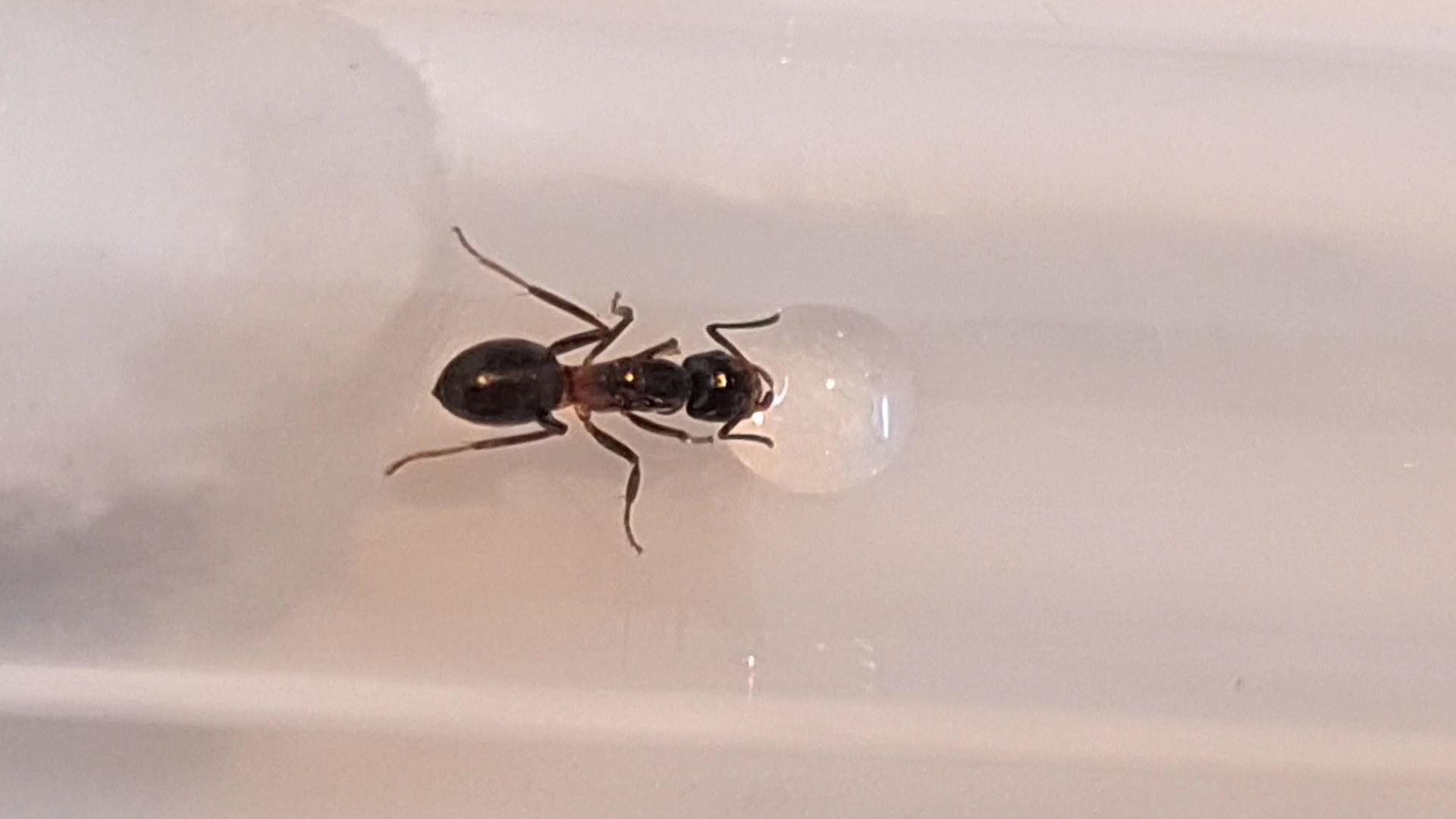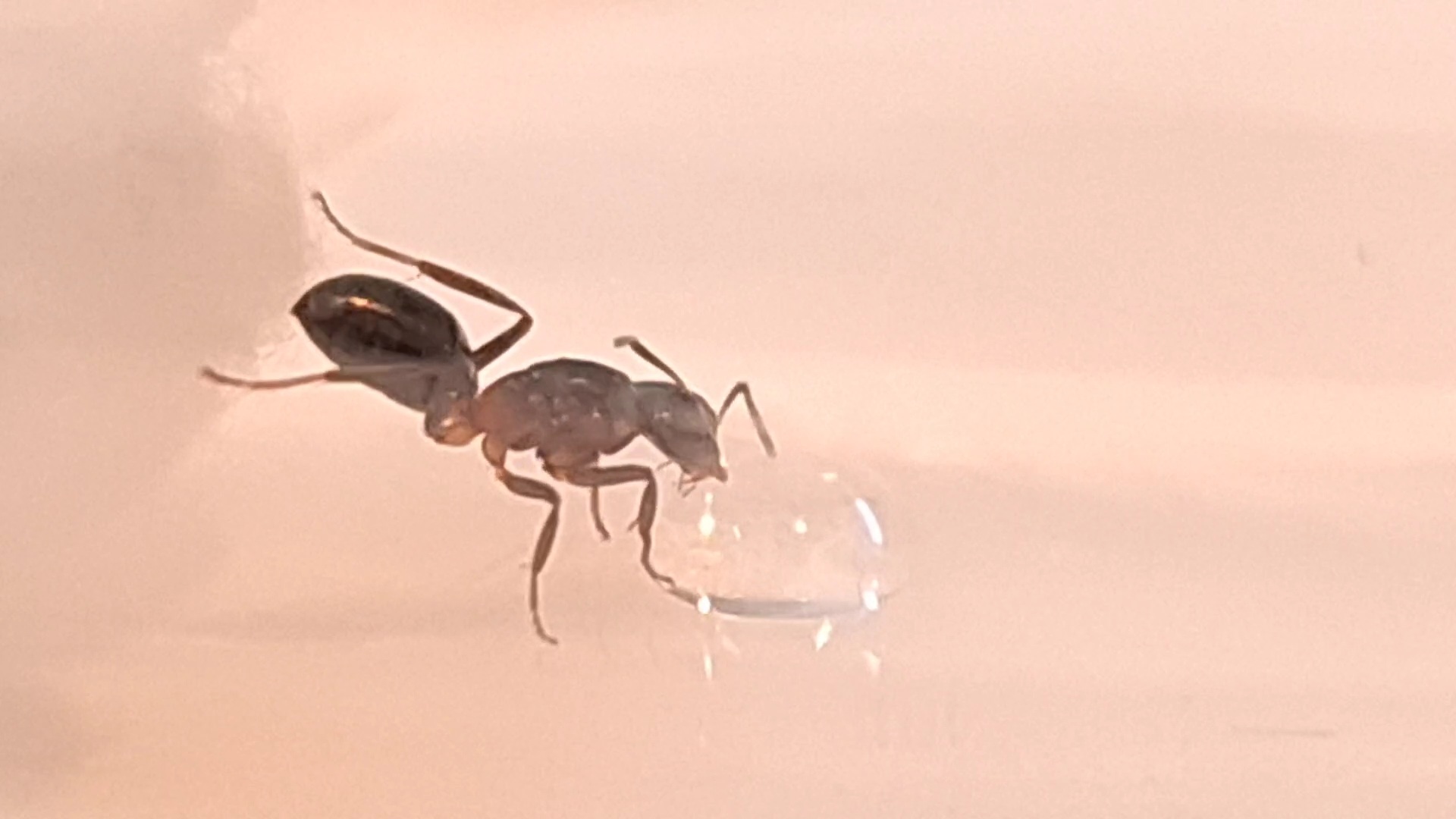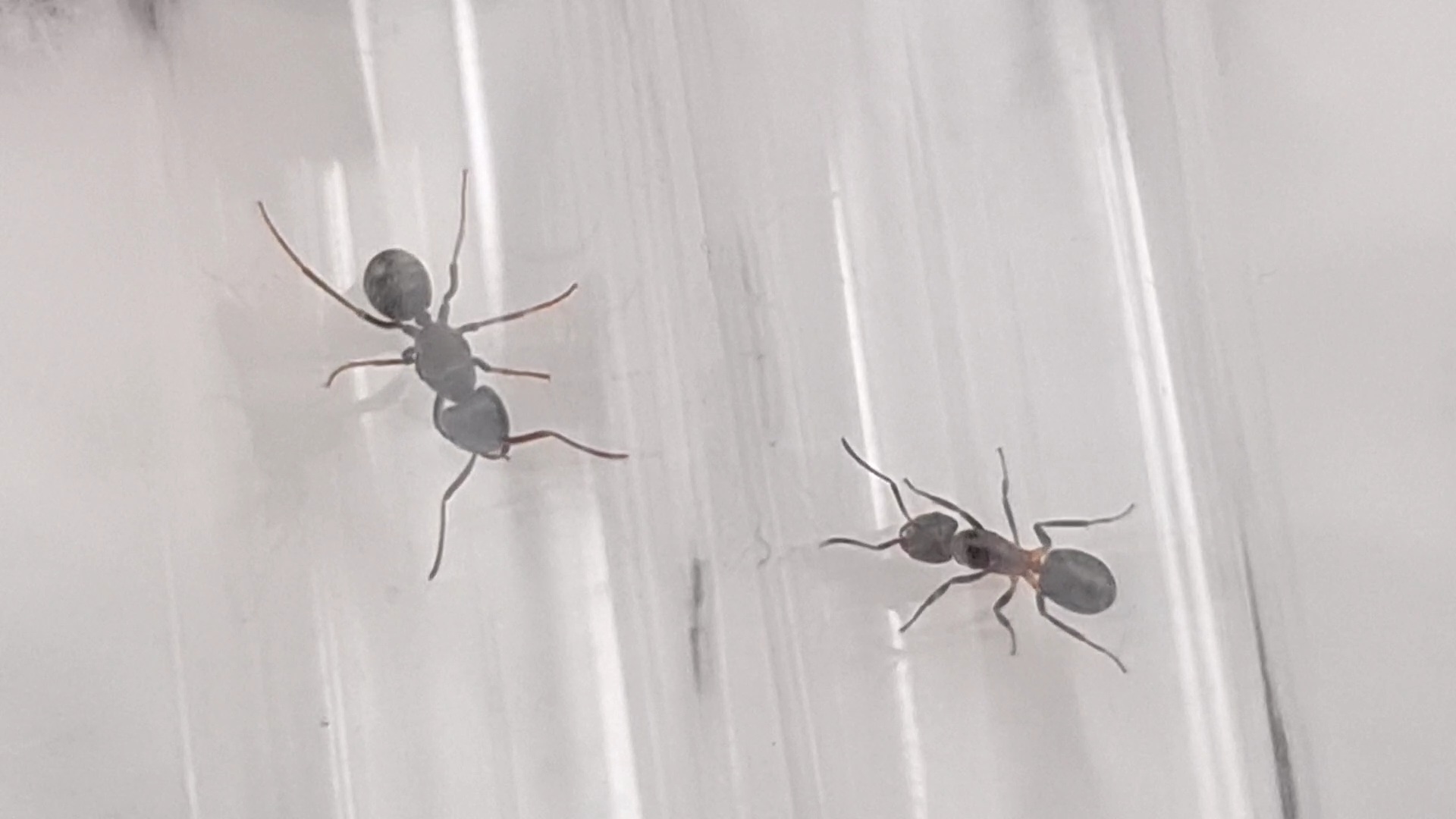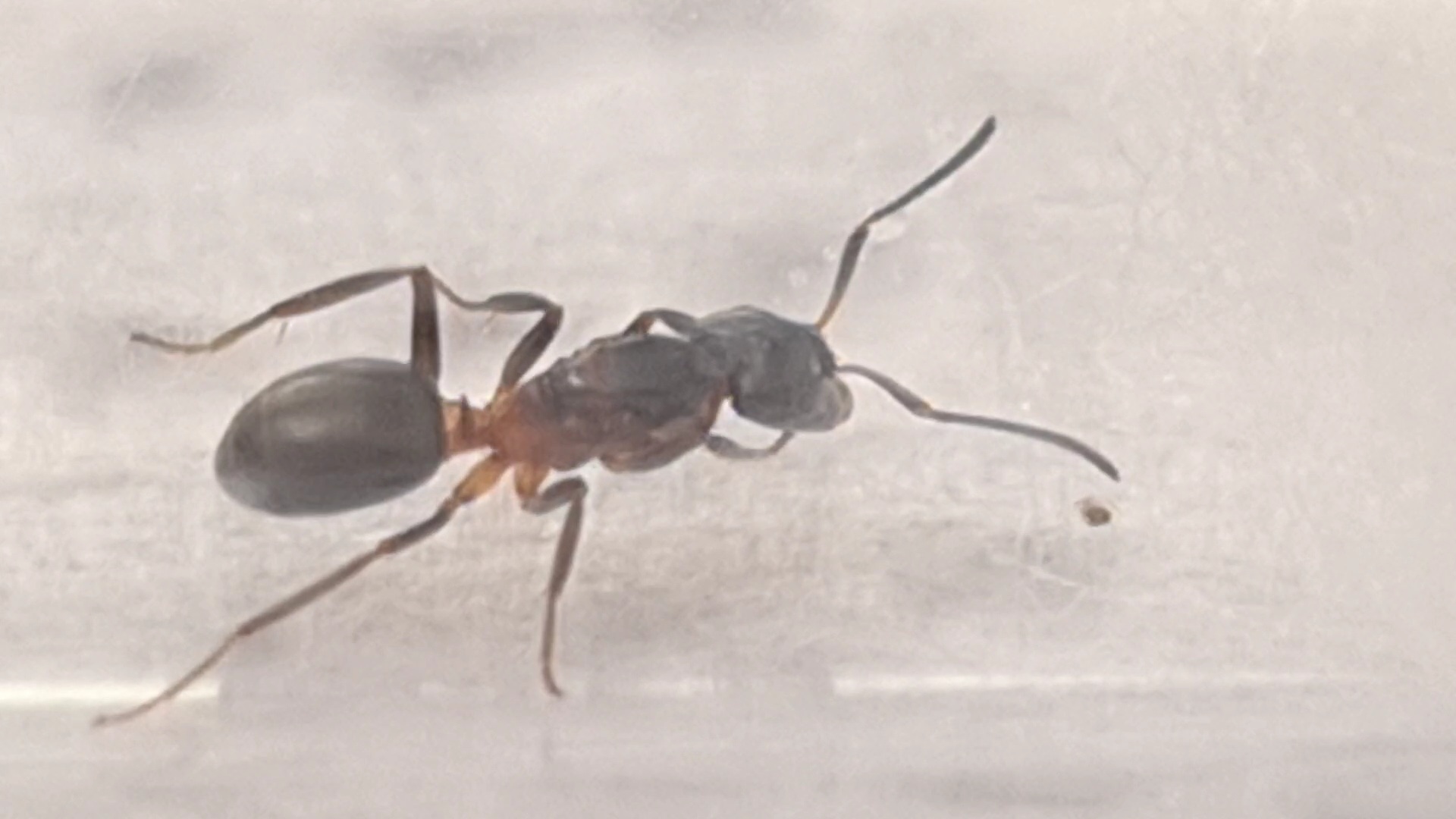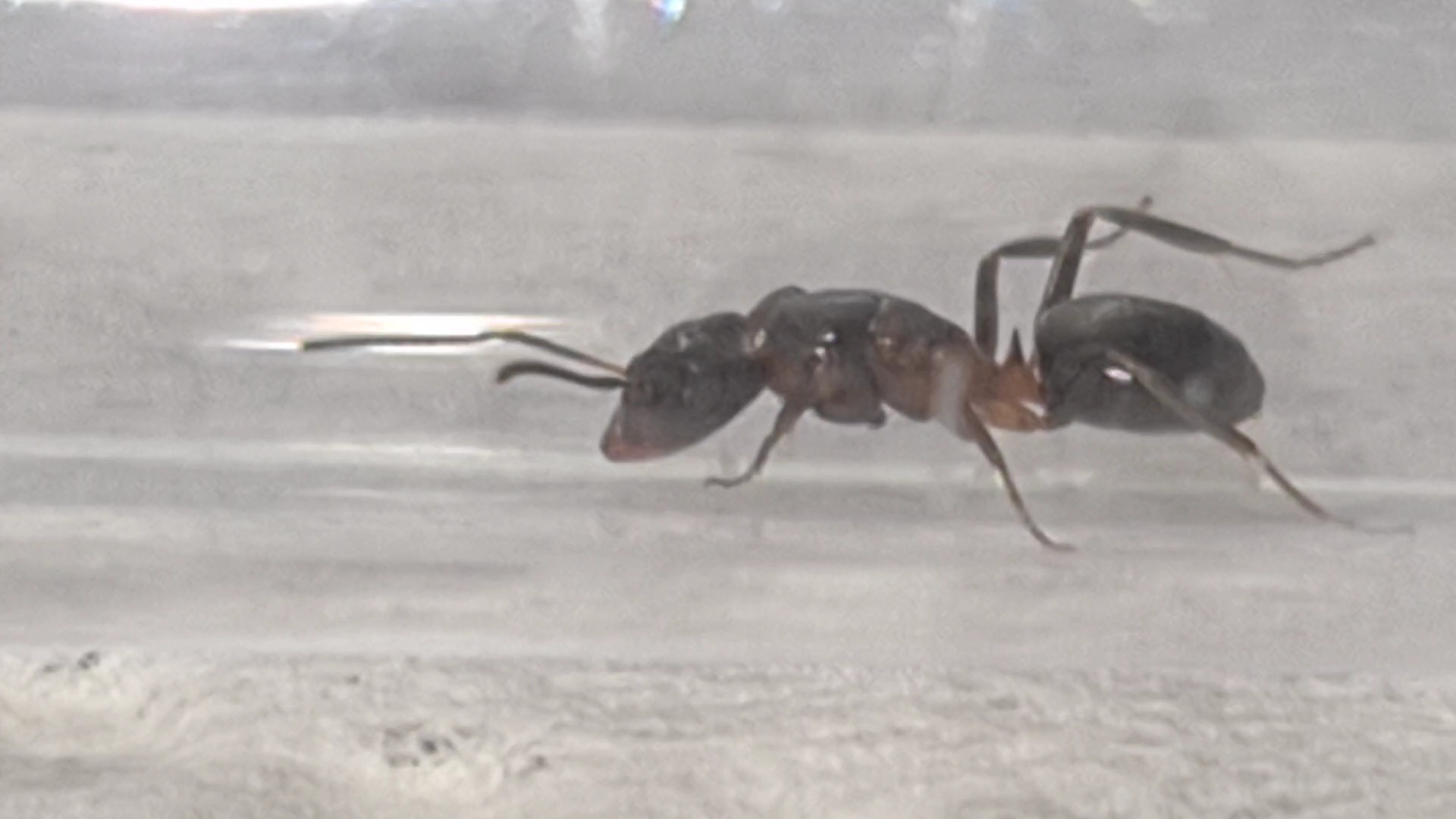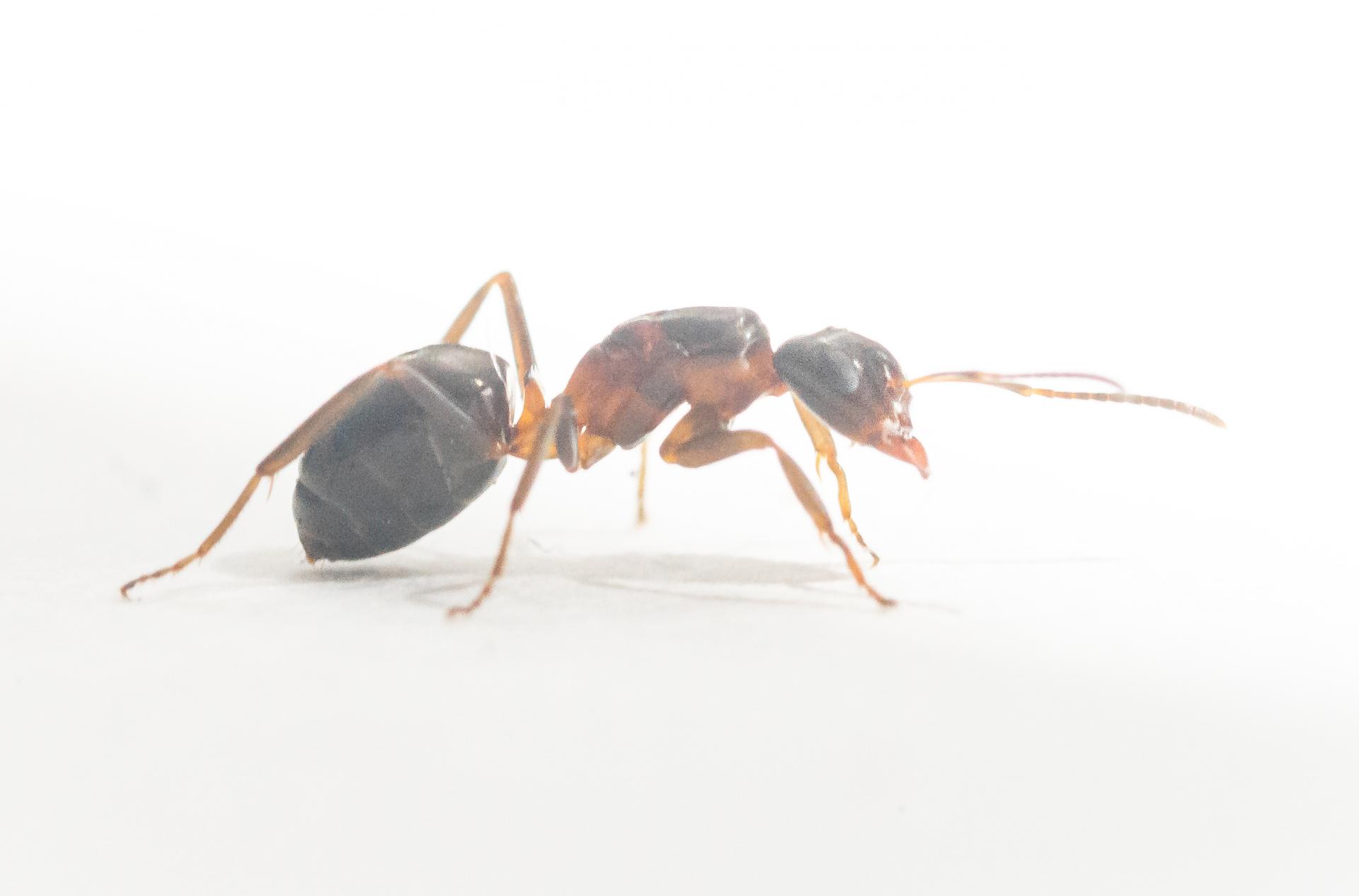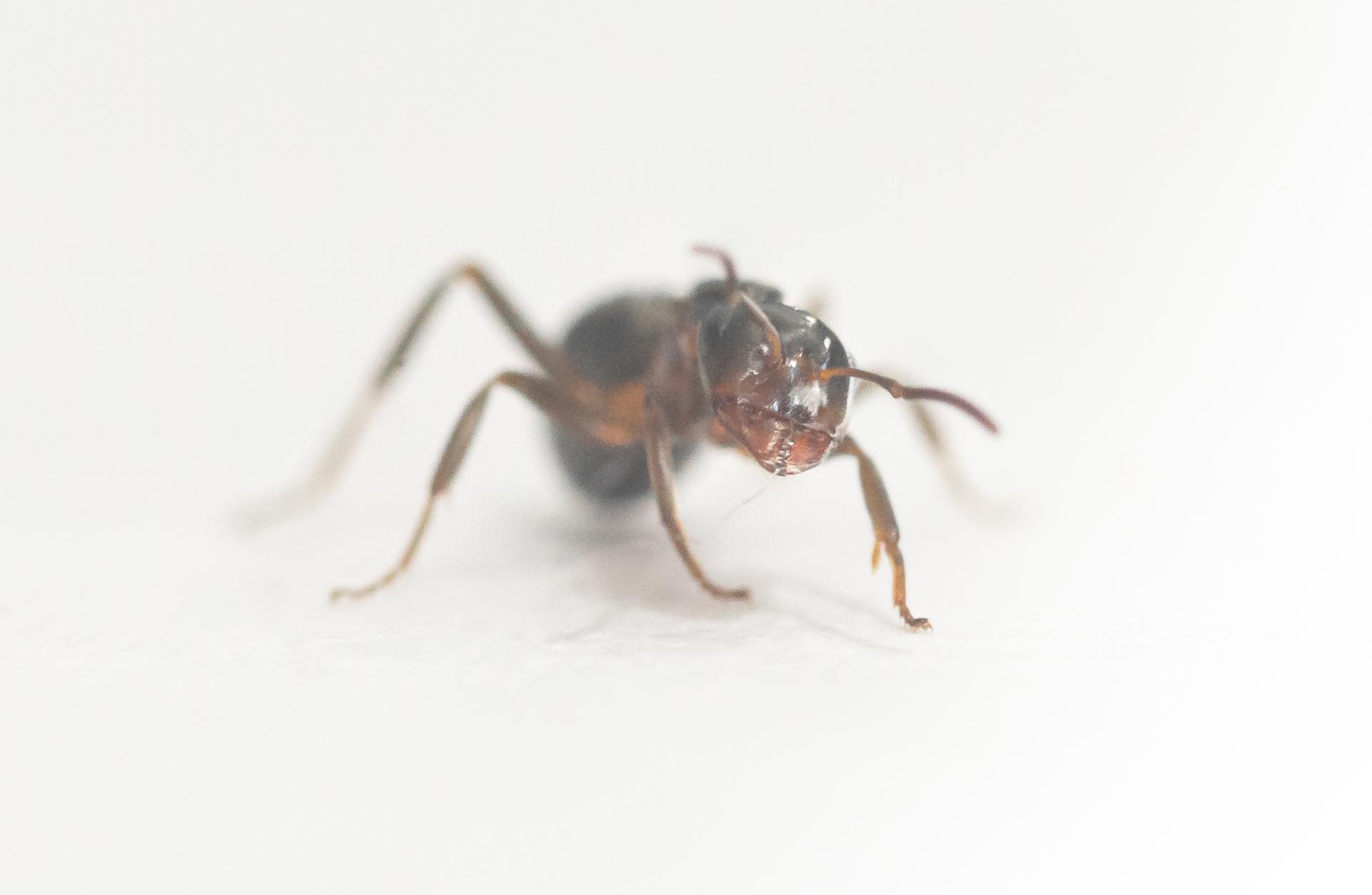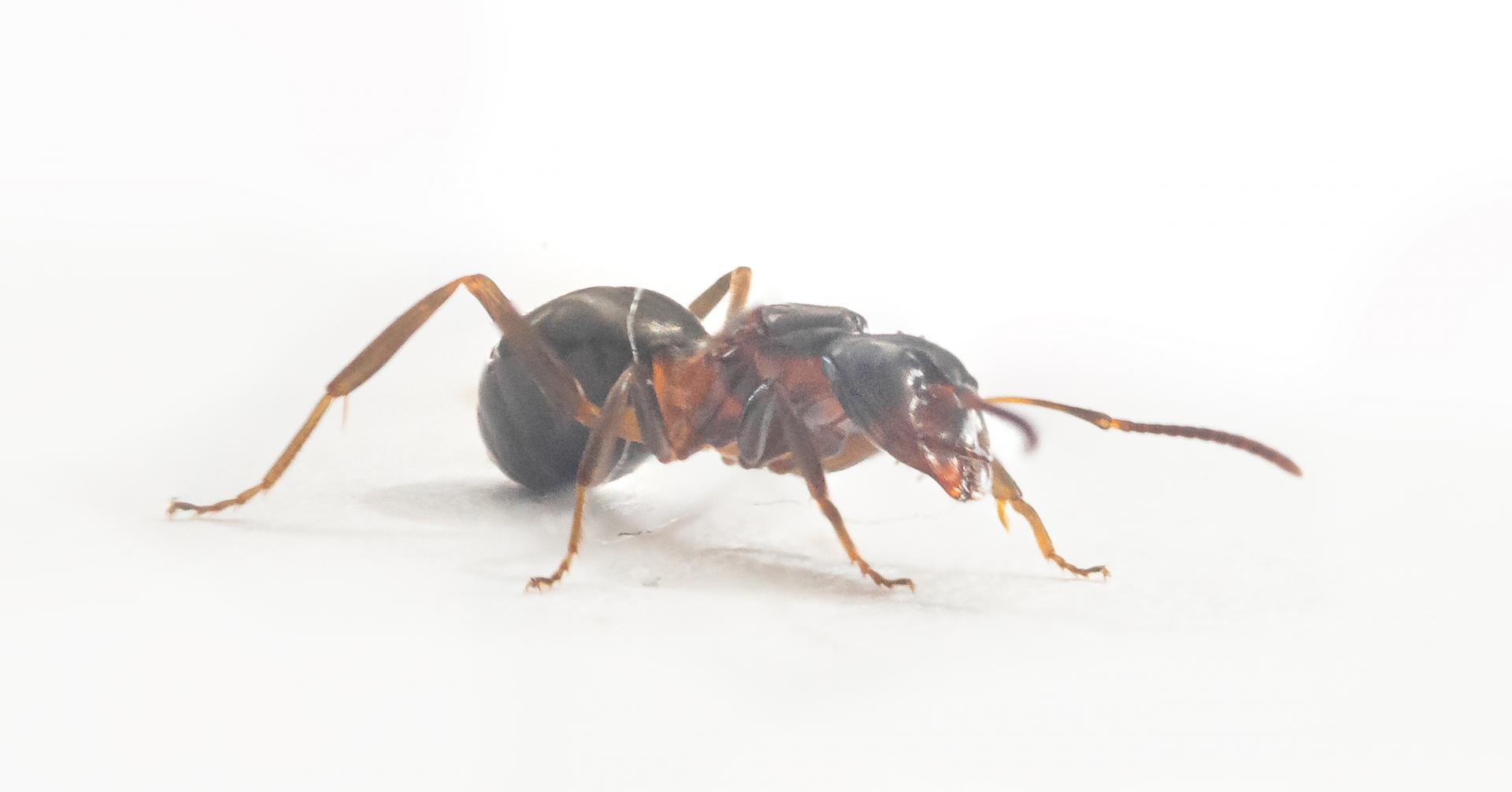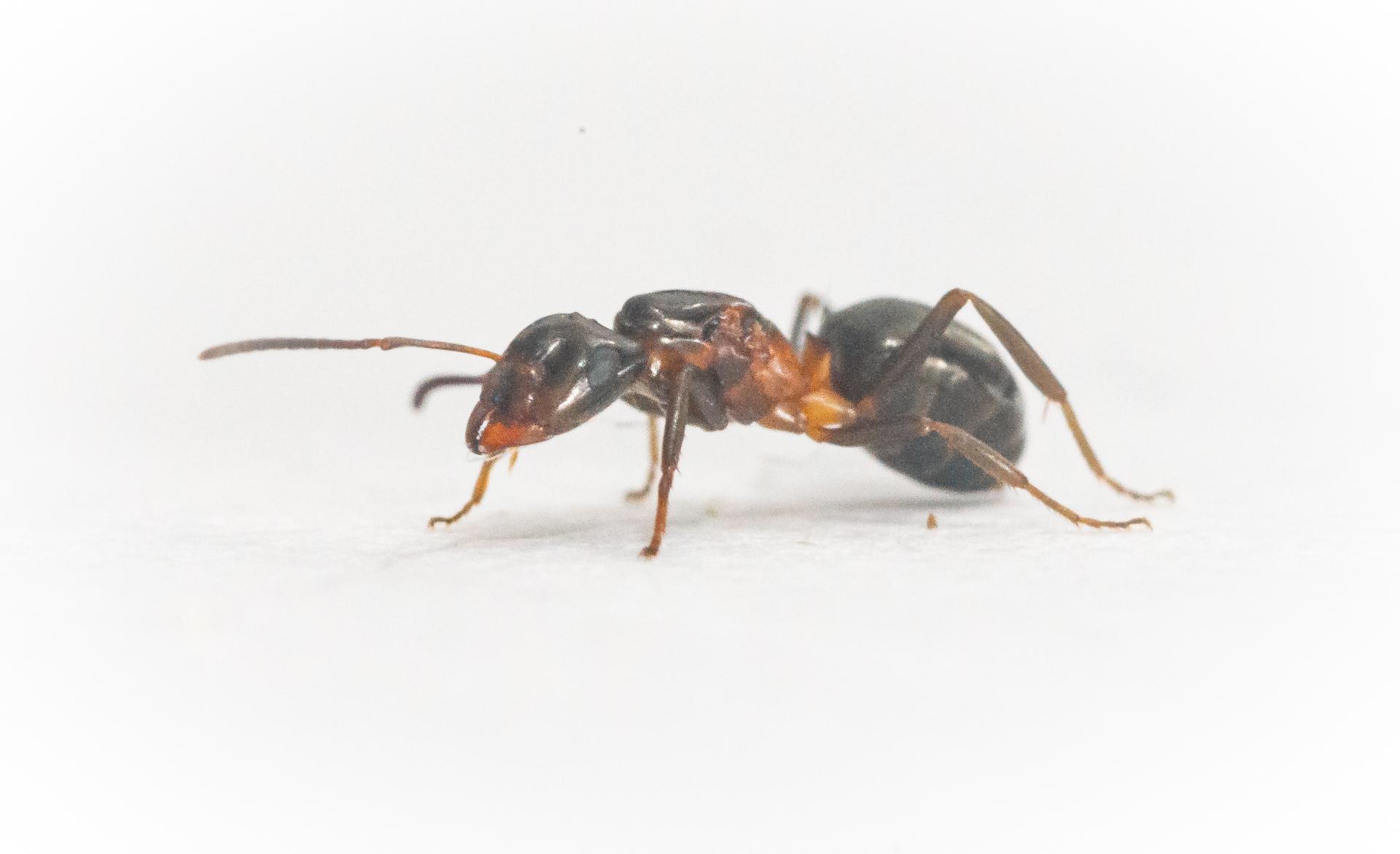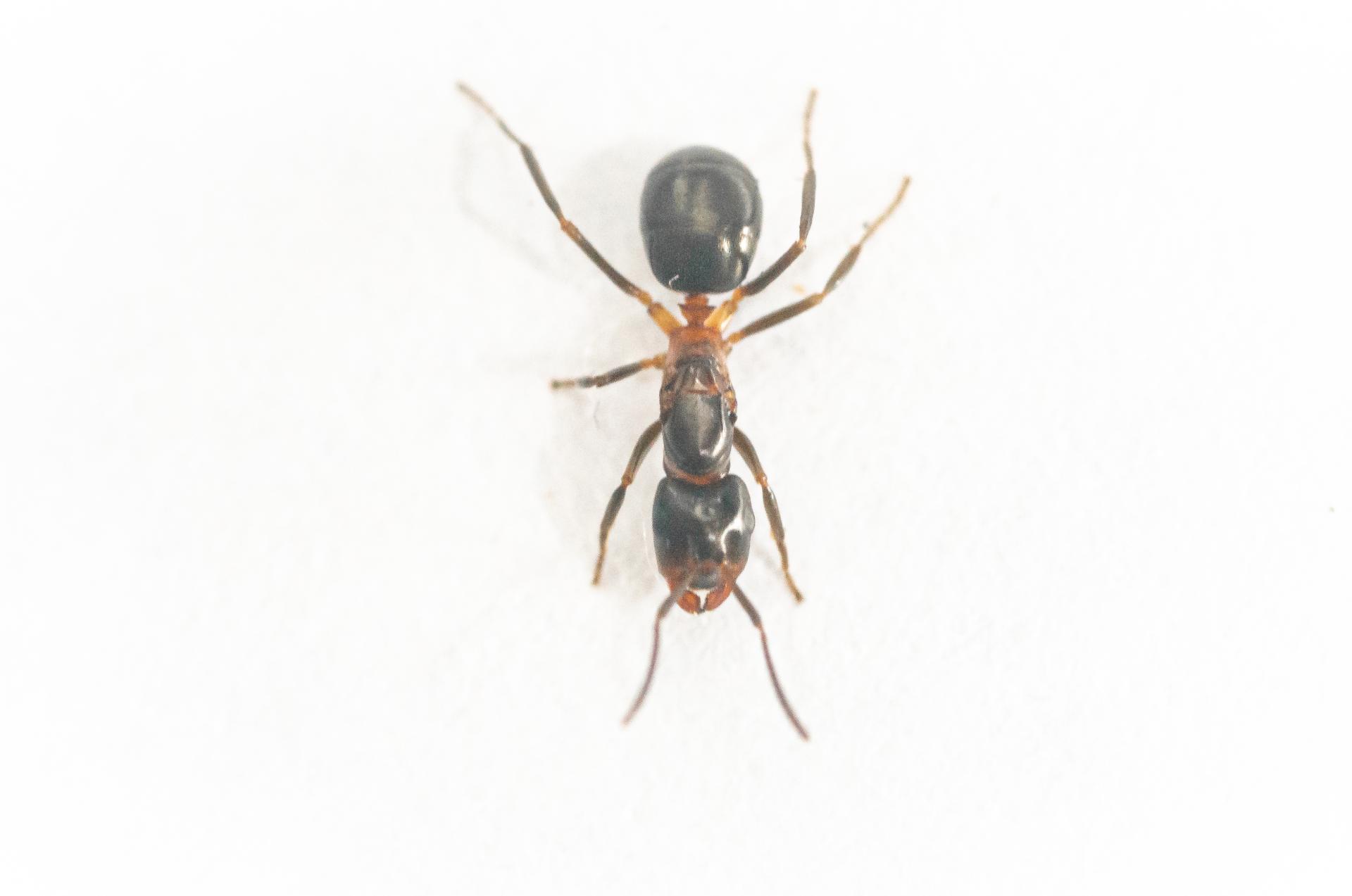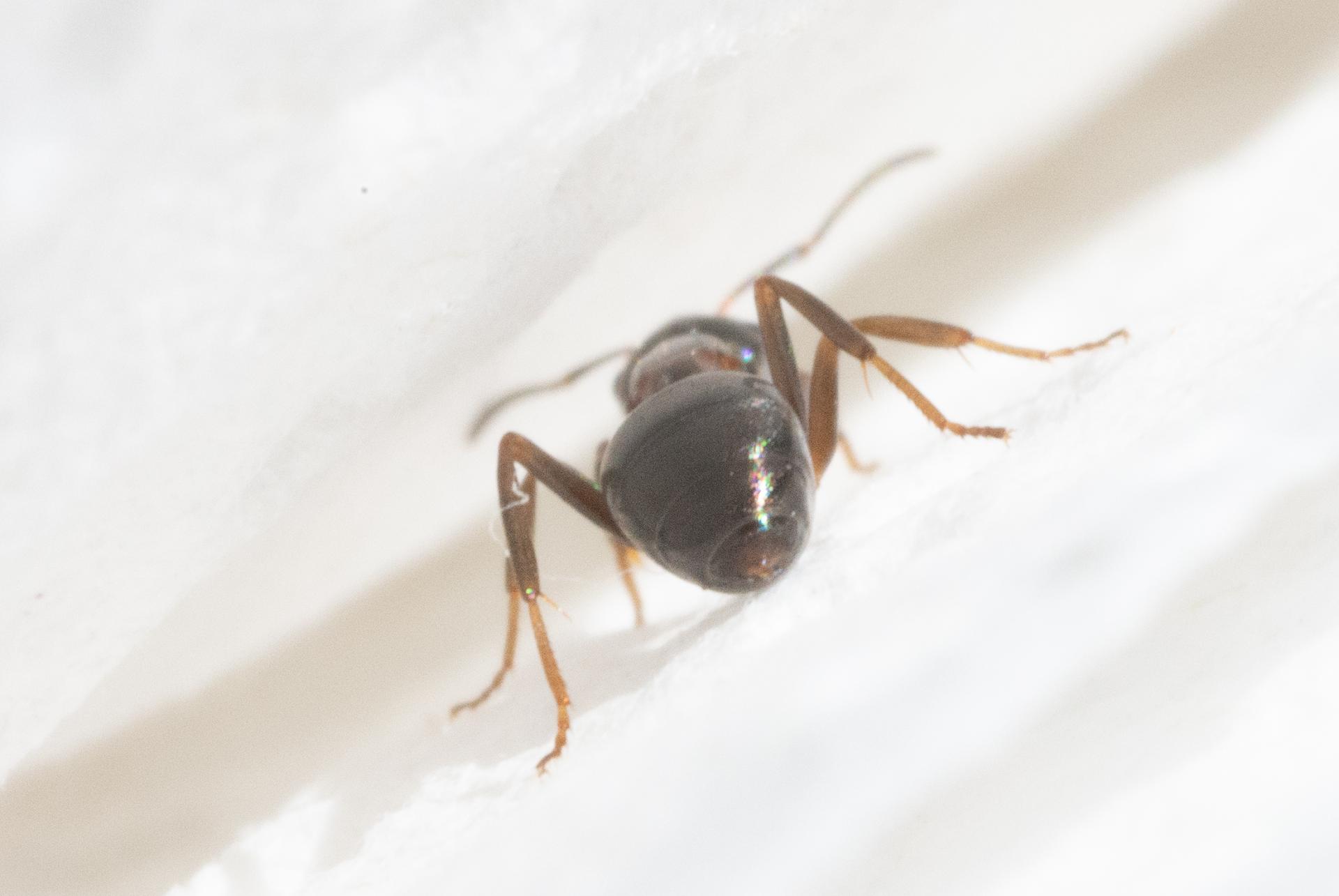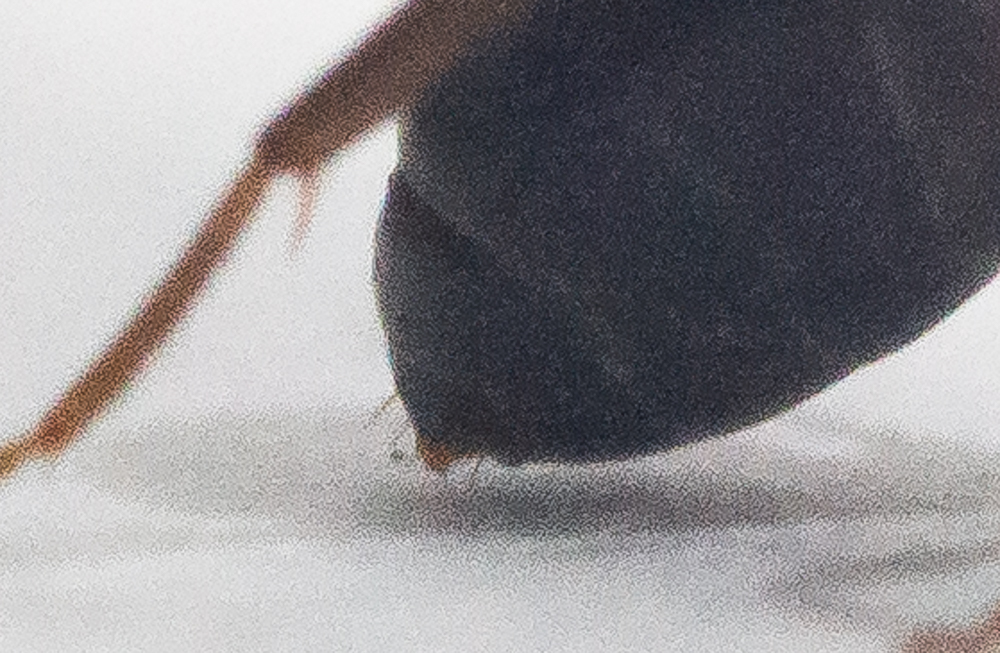- Formiculture.com
- Forums
- Gallery
- Members
- Member Map
- Chat
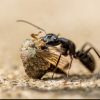
Netherlands queen, Aug. 7th 2021
Started By
FelixTheAnter
, Aug 7 2021 11:41 PM
10 replies to this topic
#1
 Offline
-
Posted August 7 2021 - 11:41 PM
Offline
-
Posted August 7 2021 - 11:41 PM
There was a massive nuptial flight a few days ago here in far North Holland. Species I've seen running around include Lasius Niger, Lasius Flavus, Lasius Umbratus, Lasius Fulignosa, and Myrmica Rubra. I also found this girl yesterday, she seems to be a queen but is unlike anything I've seen before. Perhaps a parasite? The last photo is her next to (what I believe is, on the left) Lasius Fulignosa. She is 7mm long and noticeably more red than the Fulignosa.
Anyone know what this girl is?
Anyone know what this girl is?
#2
 Offline
-
Posted August 8 2021 - 7:08 AM
Offline
-
Posted August 8 2021 - 7:08 AM
This is an unorthodox opinion, but could it be formica exsecta? The head shape definitely reminds me of them, and it looks very different from any parasitic lasius I’ve heard of.
My journals:
Polyergus Mexicanus: https://www.formicul...gs/#entry175528
Lasius minutus: https://www.formicul...cs/#entry174811
Lasius latipes: https://www.formicul...gs/#entry206449
General acanthomyops journal: https://www.formicul...yops-with-eggs/
Polyergus Mexicanus: https://www.formicul...gs/#entry175528
Lasius minutus: https://www.formicul...cs/#entry174811
Lasius latipes: https://www.formicul...gs/#entry206449
General acanthomyops journal: https://www.formicul...yops-with-eggs/
#3
 Offline
-
Posted August 8 2021 - 5:29 PM
Offline
-
Posted August 8 2021 - 5:29 PM
Very strange looking. I wonder if this could be a genetic mutation here, hence its strangeness. Almost looks like a Lasius, but the side view doesnt seem to support that.
Hi there! I went on a 6 month or so hiatus, in part due, and in part cause of the death of my colonies.
However, I went back to the Sierras, and restarted my collection, which is now as follows:
Aphaenogaster uinta, Camponotus vicinus, Camponotus modoc, Formica cf. aserva, Formica cf. micropthalma, Formica cf. manni, Formica subpolita, Formica cf. subaenescens, Lasius americanus, Manica invidia, Pogonomyrmex salinus, Pogonomyrmex sp. 1, Solenopsis validiuscula, & Solenopsis sp. 3 (new Sierra variant).
#4
 Offline
-
Posted August 9 2021 - 12:27 AM
Offline
-
Posted August 9 2021 - 12:27 AM
Shd is definitely not quite like any queens I've found online. She does look more like a Formica than a Lasius, but I'm really not experienced enough to be able to say that confidently.
I have access to a bunch of Lasius Niger callows. If she is a formica, and I give them to her, will she just kill them? If so, that could potentially be a quick way to figure out if she is Lasius or not? I'll also see if I can break out my camera and get some better photos
I have access to a bunch of Lasius Niger callows. If she is a formica, and I give them to her, will she just kill them? If so, that could potentially be a quick way to figure out if she is Lasius or not? I'll also see if I can break out my camera and get some better photos
#5
 Offline
-
Posted August 9 2021 - 12:49 AM
Offline
-
Posted August 9 2021 - 12:49 AM
#6
 Offline
-
Posted August 10 2021 - 6:45 AM
Offline
-
Posted August 10 2021 - 6:45 AM
#7
 Offline
-
Posted August 10 2021 - 10:04 AM
Offline
-
Posted August 10 2021 - 10:04 AM
Definitely a parasitic Formica queen.
Hi there! I went on a 6 month or so hiatus, in part due, and in part cause of the death of my colonies.
However, I went back to the Sierras, and restarted my collection, which is now as follows:
Aphaenogaster uinta, Camponotus vicinus, Camponotus modoc, Formica cf. aserva, Formica cf. micropthalma, Formica cf. manni, Formica subpolita, Formica cf. subaenescens, Lasius americanus, Manica invidia, Pogonomyrmex salinus, Pogonomyrmex sp. 1, Solenopsis validiuscula, & Solenopsis sp. 3 (new Sierra variant).
#8
 Offline
-
Posted August 10 2021 - 10:14 AM
Offline
-
Posted August 10 2021 - 10:14 AM
Its 100% formica exsecta. Get her some formica fusca callows and pupae, as exsecta group cannot open pupae to my knowledge.
My journals:
Polyergus Mexicanus: https://www.formicul...gs/#entry175528
Lasius minutus: https://www.formicul...cs/#entry174811
Lasius latipes: https://www.formicul...gs/#entry206449
General acanthomyops journal: https://www.formicul...yops-with-eggs/
Polyergus Mexicanus: https://www.formicul...gs/#entry175528
Lasius minutus: https://www.formicul...cs/#entry174811
Lasius latipes: https://www.formicul...gs/#entry206449
General acanthomyops journal: https://www.formicul...yops-with-eggs/
#9
 Offline
-
Posted August 11 2021 - 10:40 AM
Offline
-
Posted August 11 2021 - 10:40 AM
I was actually thinking that she looks to be the spitting image of F. Pressilabris, which has been reported in the collection area a couple times
This image looks exactly like her:
https://insektarium....bnica-mniejsza/
This image looks exactly like her:
https://insektarium....bnica-mniejsza/
- Manitobant likes this
#10
 Offline
-
Posted August 11 2021 - 10:42 AM
Offline
-
Posted August 11 2021 - 10:42 AM
She seems to have more dark coloration than Exsecta or the other parasitic formica, which made me think Pressilabris
#11
 Offline
-
Posted August 11 2021 - 10:49 AM
Offline
-
Posted August 11 2021 - 10:49 AM
I agree with your ID Felix. Seems to fit better than exsecta.
Hi there! I went on a 6 month or so hiatus, in part due, and in part cause of the death of my colonies.
However, I went back to the Sierras, and restarted my collection, which is now as follows:
Aphaenogaster uinta, Camponotus vicinus, Camponotus modoc, Formica cf. aserva, Formica cf. micropthalma, Formica cf. manni, Formica subpolita, Formica cf. subaenescens, Lasius americanus, Manica invidia, Pogonomyrmex salinus, Pogonomyrmex sp. 1, Solenopsis validiuscula, & Solenopsis sp. 3 (new Sierra variant).
0 user(s) are reading this topic
0 members, 0 guests, 0 anonymous users



